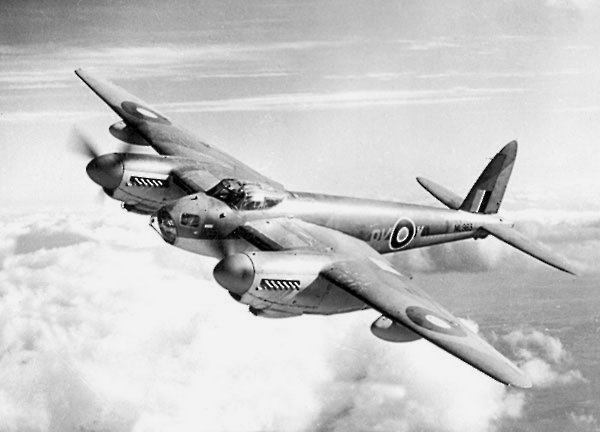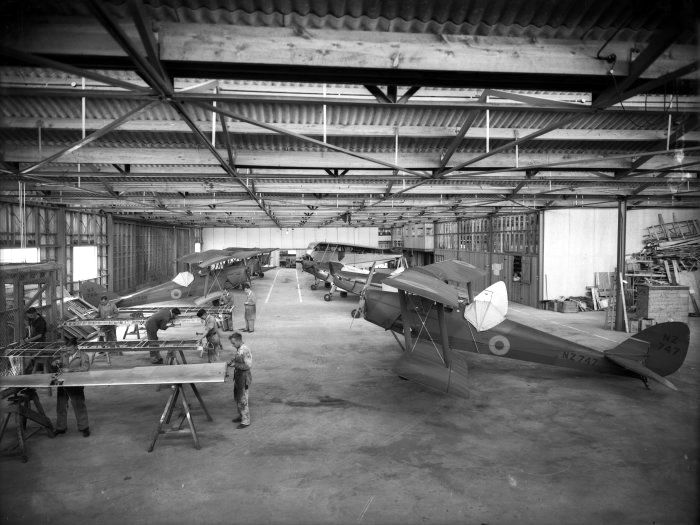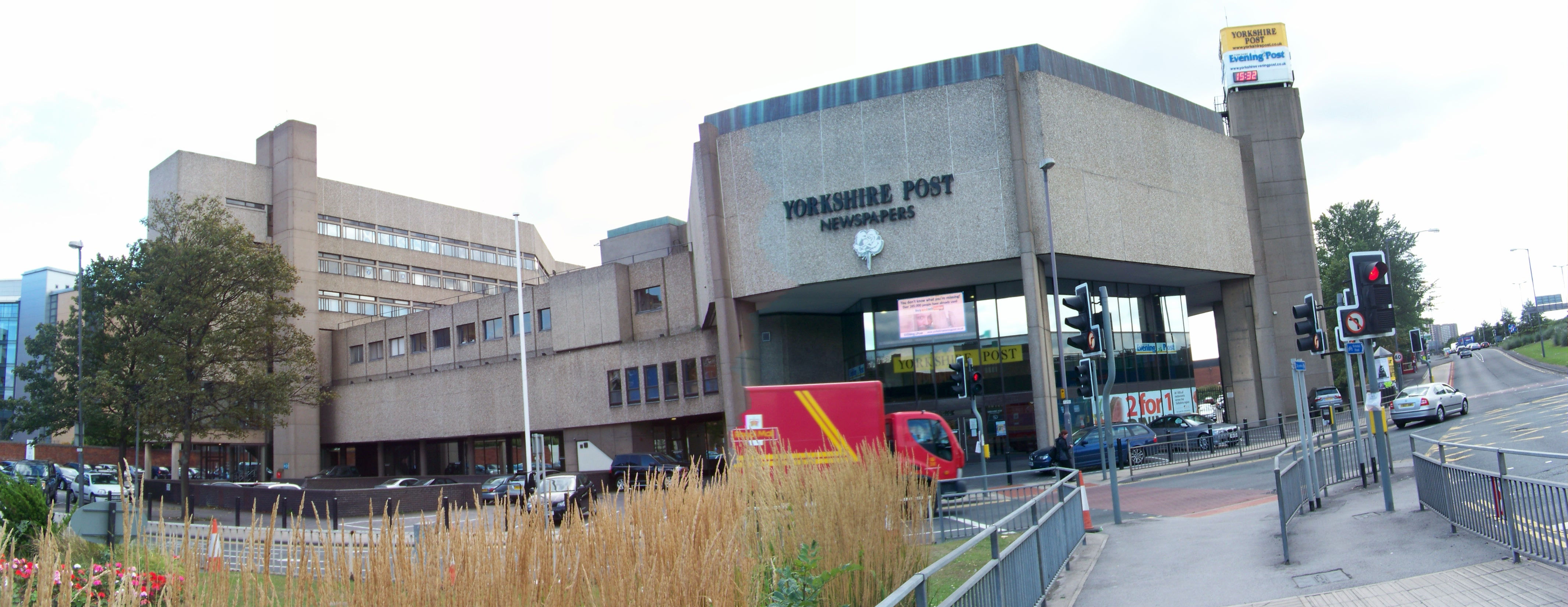|
Geoffrey Warnes
Squadron Leader Geoffrey Berrington Warnes, (22 October 1914 – 22 February 1944) was a British pilot who flew with No. 263 Squadron RAF during the Second World War. He was described by Group Captain Johnnie Johnson as a "gay, cheerful character" who was a "leader of men".Johnson, J.E. (1956). ''Wing Leader '', p. 197. London: Chatto and Windus. Early life Warnes was born on 22 October 1914, the son of Clifford and Dorothy Warnes. As a child he lived in Headingley, Leeds; he was educated at Cockburn High School, leaving in 1931 "to work in an office". He was a member of the Civil Air Guard where he learnt to fly with the Yorkshire Aeroplane Club at Yeadon Aerodrome, his instructor was "Ginger" Lacey (later squadron leader).''Flight'' (28 January 1943).''The People'', "Ace Pilot beat the Doctors", (undated) He played rugby with Headingley Rugby Club (now Leeds Tykes) from 1936 until the outbreak of war. War service At the outbreak of the Second World War, Warnes volunteered a ... [...More Info...] [...Related Items...] OR: [Wikipedia] [Google] [Baidu] |
Leeds
Leeds () is a City status in the United Kingdom, city and the administrative centre of the City of Leeds district in West Yorkshire, England. It is built around the River Aire and is in the eastern foothills of the Pennines. It is also the third-largest settlement (by population) in England, after London and Birmingham. The city was a small manorial borough in the 13th century and a market town in the 16th century. It expanded by becoming a major production centre, including of carbonated water where it was invented in the 1760s, and trading centre (mainly with wool) for the 17th and 18th centuries. It was a major mill town during the Industrial Revolution. It was also known for its flax industry, Foundry, iron foundries, engineering and printing, as well as shopping, with several surviving Victorian era arcades, such as Leeds Kirkgate Market, Kirkgate Market. City status was awarded in 1893, a populous urban centre formed in the following century which absorbed surrounding vi ... [...More Info...] [...Related Items...] OR: [Wikipedia] [Google] [Baidu] |
James Harry Lacey
James Harry Lacey, (1 February 1917 – 30 May 1989), was one of the top scoring Royal Air Force fighter pilots of the Second World War and was the second-highest scoring RAF fighter pilot of the Battle of Britain, behind Pilot Officer Eric Lock of No. 41 Squadron RAF. Lacey was credited with 28 enemy aircraft destroyed, five probables and nine damaged. Early life Lacey left King James Grammar School, Knaresborough"Fighter Aces of the RAF" by ECR Baker, published William Kimber 1962, 450017109 in 1933, continuing his education at Leeds Technical College. He spent four years as an apprentice pharmacist. RAF career Lacey joined the RAFVR (Royal Air Force Volunteer Reserve) in January 1937 as a trainee pilot at Perth, Scotland. In 1938, he then took an instructor's course, becoming an instructor at the Yorkshire Flying School, accumulating 1,000 hours of flight time before the war. Called up at the outbreak of war, he joined No. 501 Squadron RAF. Second World War Battle of F ... [...More Info...] [...Related Items...] OR: [Wikipedia] [Google] [Baidu] |
Glossary Of RAF Code Names
Code words used by the Royal Air Force during the Second World War: *Angels – height in thousands of feet. *Bandit – identified enemy aircraft. *Bogey – unidentified (possibly unfriendly) aircraft. *Buster – radio-telephony code phrase for 'maximum throttle' or full power climb. *Channel Stop – Air operations intended to stop enemy shipping passing through the Strait of Dover.Rawlings, John D.R., ''Fighter Squadrons of the RAF and their Aircraft'', London: Macdonald and Jane's Publishers Ltd. *Circus – daytime bomber attacks with fighter escorts against short range targets, to occupy enemy fighters and keep them in the area concerned. *Diver – radio-telephony code word for a sighted V-1 flying bomb. *Flower – Counter-air patrols in the area of enemy airfields to preventing aircraft from taking off and attacking those aircraft that succeeded. *Gardening – mine-laying operations. *Instep – missions to restrict attacks on Coastal Command aircraft by maintaining a ... [...More Info...] [...Related Items...] OR: [Wikipedia] [Google] [Baidu] |
Heavy Fighter
A heavy fighter is a historic category of fighter aircraft produced in the 1930s and 1940s, designed to carry heavier weapons, and/or operate at longer ranges than light fighter aircraft. To achieve performance, most heavy fighters were twin-engine, and many had multi-place crews; This was in contrast to light fighters, which were typically single-engine and single-crew aircraft. In Germany, they were known as ''Zerstörer'' ("destroyer"). The heavy fighter was a major design class during the pre-World War II period, conceived as long-range escort fighters or heavily-armed bomber destroyers. Most such designs failed in this mission, as they could not maneuver with the more conventional, single-engine fighters, and suffered heavy losses. Most notable among such designs was the Messerschmitt Bf 110, which suffered great losses during the Battle of Britain. An exception was the American Lockheed P-38 Lightning, which proved an effective heavy fighter; even against smaller, lighter, ... [...More Info...] [...Related Items...] OR: [Wikipedia] [Google] [Baidu] |
Westland Whirlwind (fighter)
The Westland Whirlwind was a British twin-engined fighter developed by Westland Aircraft. A contemporary of the Supermarine Spitfire and Hawker Hurricane, it was the first single-seat, twin-engined, cannon-armed fighter of the Royal Air Force. When it first flew in 1938, the Whirlwind was one of the fastest combat aircraft in the world and with four 20 mm Hispano-Suiza HS.404 autocannon in its nose, the most heavily armed.Moyes 1967, pp. 278–279. Protracted development problems with its Rolls-Royce Peregrine engines delayed the project and only 114 Whirlwinds were built. During the Second World War, only three RAF squadrons were equipped with the aircraft and, despite its success as a fighter and ground attack aircraft, it was withdrawn from service in 1943. Design and development By the mid-1930s, aircraft designers around the world perceived that increased attack speeds were imposing shorter firing times on fighter pilots. This implied less ammunition hitting the ... [...More Info...] [...Related Items...] OR: [Wikipedia] [Google] [Baidu] |
Somerset
( en, All The People of Somerset) , locator_map = , coordinates = , region = South West England , established_date = Ancient , established_by = , preceded_by = , origin = , lord_lieutenant_office =Lord Lieutenant of Somerset , lord_lieutenant_name = Mohammed Saddiq , high_sheriff_office =High Sheriff of Somerset , high_sheriff_name = Mrs Mary-Clare Rodwell (2020–21) , area_total_km2 = 4171 , area_total_rank = 7th , ethnicity = 98.5% White , county_council = , unitary_council = , government = , joint_committees = , admin_hq = Taunton , area_council_km2 = 3451 , area_council_rank = 10th , iso_code = GB-SOM , ons_code = 40 , gss_code = , nuts_code = UKK23 , districts_map = , districts_list = County council area: , MPs = * Rebecca Pow (C) * Wera Hobhouse ( LD) * Liam Fox (C) * David Warburton (C) * Marcus Fysh (C) * Ian Liddell-Grainger (C) * James Heappey (C) * Jacob Rees-Mogg (C) * John Penrose (C) , police = Avon and Somerset Polic ... [...More Info...] [...Related Items...] OR: [Wikipedia] [Google] [Baidu] |
RAF Charmy Down
RAF Charmy Down is a former Royal Air Force (RAF) station in Somerset, England, approximately north-northeast of Bath and west of London. Opened in 1941, it was used initially by the RAF and from 1943 by the United States Army Air Forces, primarily as a night fighter interceptor airfield. It was closed in 1946. Today the remains of the airfield are on private property and are used as agricultural fields. History A kerbed long barrow site was flattened to make way for the airfield. A cremation urn had been found near a burial of a long necked beaker and a bronze dagger, believed to be from the Beaker people. The airfield was planned as a satellite for the Maintenance Unit at nearby RAF Colerne, but by the time construction work started in 1940 it had been selected as a sector station by No. 10 Group of RAF Fighter Command. RAF Charmy Down was opened late in 1940 and originally had a grass surface with landing strips of , both southeast to northwest and northeast to southwest. ... [...More Info...] [...Related Items...] OR: [Wikipedia] [Google] [Baidu] |
Philip Clermont Livingston
Air Marshal Sir Philip Clermont Livingston, (2 March 1893 − 12 February 1982) was a physician, aviator, and a senior officer in the Royal Air Force who served as Director-General RAF Medical Services from 1948 to 1951. Early life and education Livingston was born in Cowichan, Vancouver Island, Canada. He was the son of Clermont Livingston (1850–1907) and his second wife Mary Ann née Jarvis (1854–1935). He went to the United Kingdom after the death of his father and gained his Bachelor of Medicine at Jesus College, Cambridge, where he also gained a rowing blue in 1914. After university he joined the Royal Naval Volunteer Reserve and served from 1914–19 as a surgeon probationer. In 1919 he joined the Medical Branch of the newly formed Royal Air Force (RAF) and continued his medical qualifications in public health, surgery and ophthalmology. RAF career In 1929 Livingston was posted by the RAF to Iraq as a General Surgeon. He worked at the Baghdad Eye Hospital and gained ... [...More Info...] [...Related Items...] OR: [Wikipedia] [Google] [Baidu] |
De Havilland Tiger Moth
The de Havilland DH.82 Tiger Moth is a 1930s British biplane designed by Geoffrey de Havilland and built by the de Havilland, de Havilland Aircraft Company. It was operated by the Royal Air Force (RAF) and other operators as a primary trainer (aircraft), trainer aircraft. In addition to the type's principal use for ''ab initio'' training, the World War II, Second World War had RAF Tiger Moths operating in other capacities, including Maritime patrol aircraft, maritime surveillance and defensive anti-invasion preparations; some aircraft were even outfitted to function as armed light bombers. The Tiger Moth remained in service with the RAF until it was replaced by the de Havilland Canada DHC-1 Chipmunk, de Havilland Chipmunk during the early 1950s. Many of the military surplus aircraft subsequently entered into civilian operation. Many nations have used the Tiger Moth in both military and civilian applications, and it remains in widespread use as a recreational aircraft. It is ... [...More Info...] [...Related Items...] OR: [Wikipedia] [Google] [Baidu] |
Barrage Balloon
A barrage balloon is a large uncrewed tethered balloon used to defend ground targets against aircraft attack, by raising aloft steel cables which pose a severe collision risk to aircraft, making the attacker's approach more difficult. Early barrage balloons were often spherical. The design of the kite balloon, having a shape and cable bridling which stabilises the balloon and reduces drag, meant that it could be operated at higher wind speeds than a spherical balloon. Some examples carried small explosive charges that would be pulled up against the aircraft to ensure its destruction. Barrage balloons are not practical against very high-altitude flying aircraft, due to the weight of the long cable required. First World War France, Germany, Italy and the United Kingdom used barrage balloons in the First World War. While the French and German forces had developed kite balloons, early British barrages balloons were spherical. Sometimes, especially around London, several bal ... [...More Info...] [...Related Items...] OR: [Wikipedia] [Google] [Baidu] |
Battle Of France
The Battle of France (french: bataille de France) (10 May – 25 June 1940), also known as the Western Campaign ('), the French Campaign (german: Frankreichfeldzug, ) and the Fall of France, was the Nazi Germany, German invasion of French Third Republic, France during the Second World War. On 3 September 1939, France French declaration of war on Germany (1939), declared war on Germany following the German invasion of Poland. In early September 1939, France began the limited Saar Offensive and by mid-October had withdrawn to their start lines. German armies German invasion of Belgium (1940), invaded Belgium, German invasion of Luxembourg, Luxembourg and German invasion of the Netherlands, the Netherlands on 10 May 1940. Fascist Italy (1922-1943), Italy entered the war on 10 June 1940 and attempted an Italian invasion of France, invasion of France. France and the Low Countries were conquered, ending land operations on the Western Front (World War II), Western Front until the Normandy l ... [...More Info...] [...Related Items...] OR: [Wikipedia] [Google] [Baidu] |
The Yorkshire Post
''The Yorkshire Post'' is a daily broadsheet newspaper, published in Leeds in Yorkshire, England. It primarily covers stories from Yorkshire although its masthead carries the slogan "Yorkshire's National Newspaper". It was previously owned by Johnston Press and is now owned by JPIMedia. Founded in 1754, it is one of the oldest newspapers in the country. Editions are available throughout the United Kingdom with offices across Yorkshire in Harrogate, Hull, Scarborough, Sheffield and York, as well as correspondents in Westminster and the City of London. The current editor is James Mitchinson. It considers itself "one of Britain's most trusted and historic newsbrands." History The paper was founded in 1754, as the ''Leeds Intelligencer'', making it one of Britain's first daily newspapers. The ''Leeds Intelligencer'' was a weekly newspaper until it was purchased by a group of Conservatives in 1865 who then published daily under the current name. The first issue of ''The Yo ... [...More Info...] [...Related Items...] OR: [Wikipedia] [Google] [Baidu] |
.jpg)






